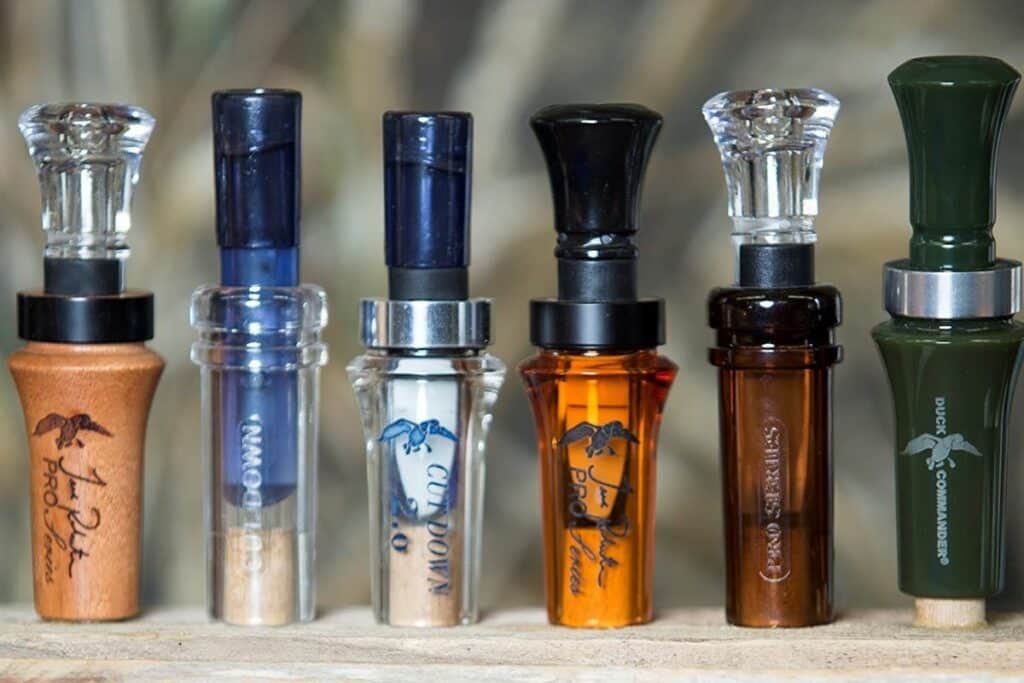Looking for the Best Duck Calls Under $50? You’ve come to the right place.
A good call can improve your success in the field by bringing ducks closer to your hunting blind. But you don’t need to break the bank to pick a high-quality duck call. I have picked some of the top calls on the market to help you buy one for under $50.
First, I tested dozens of calls in different scenarios – open water, close range, and finishing. Then, I scored them on several criteria such as sound quality, durability, and ease of use. Finally, I narrowed down the list to the top 7 options that offer the best performance for price.
If you are in a hurry: Jase Robertson Pro is the Best Duck Call Under $50.
Now let’s move to our in-depth reviews to help you pick the right call for your next hunting trip.
The 7 Best Duck Calls Under $50 Reviewed
Here is our pick of the top 7 duck calls for under 50 dollars…
- Jase Robertson Pro Hi-Ball – Best Overall
- Haydel’s DR-85 Duck Call – Alternative/ Runner-up
- Primos Hunting Original Wench – For Open Water
- Camo Max Duck Call – For Close Range/ Finishing
- Duck Commander Triple Threat – For Beginners
- Primos Hunting High Roller – Best Whistle
- Duck Commander 6-in-1 Call – Best All Around
1. Jase Robertson Pro Hi-Ball
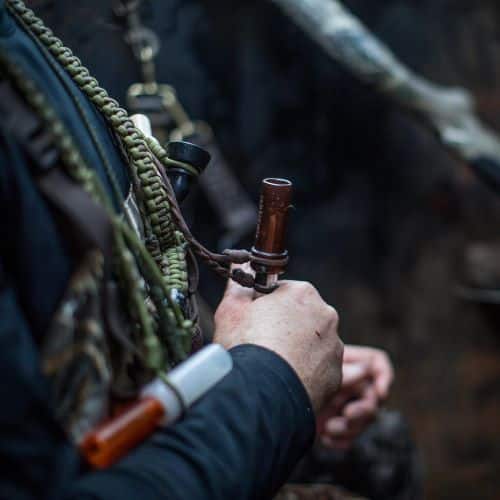
Jase Robertson Pro Hi-Ball is one of the easiest blowing calls I have ever used. Yet it is more realistic and durable than the competition. Its double reeds deliver the harmony and range of a single reed, minus the difficulty.
Out of the box, you will love the polycarbonate construction that never shrinks or swells. You can use it to produce realistic sounds even in severe conditions. The shortened barrel and reed require much less air. So you will find it extremely easy to make it sound like a mallard hen.
I always have the Jase Robertson Pro Hi-Ball on my lanyard as it offers a wide range of sounds. I have used it to mimic everything from loud higher tones to softer raspier ones. It has helped me bring in distant ducks across open waters as well as finish perfectly when the game was close.
Despite such features and performance, the Hi-Ball is one of the most affordable calls in the Jase Robertson Pro Series. So I’m happy to recommend it to duck hunters looking for a realistic, durable, and affordable option. But you don’t have to take my word for it. Just check any online hunting gear store and you’ll see hundreds of positive reviews from beginners and seasoned waterfowlers alike.
2. Haydel’s DR-85 Duck Call
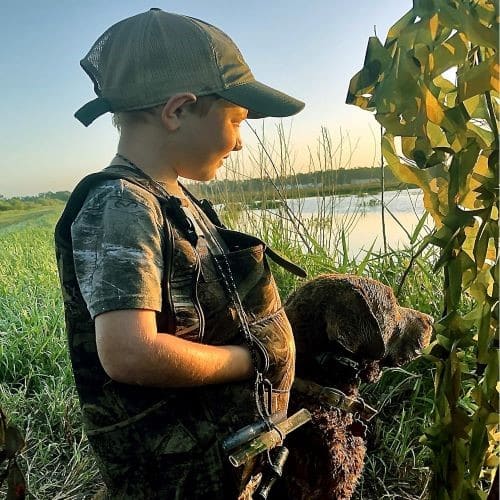
Haydels DR-85 is an affordable call that offers relatively premium features. Out of the box, you will find the call hand-tuned by professional callers. Most waterfowl hunters, especially novice callers, find this extremely helpful.
Many beginners also love this call as it blows even when the tone board gets wet. So you don’t need to slow down and clean your call during the hunt. You can stay in the game and keep calling in the ducks.
I’ve taken this call with me on several trips and found it versatile enough. I’ve used it to produce low, medium, and high calls including basic quacks, feeding chuckles, hails, and comebacks. The calls are so raspy and effective, you’ll be able to bring in the ducks easily even on public land.
I can confidently recommend Haydels DR-85 due to its affordability, ease of use, and wide range. It is so easy to learn, you can start calling in mallards on the first try. Even if it gets accidentally dropped, you can quickly and easily tune it back. Just move the wedge toward the tip to increase the pitch or the opposite side to lower it.
3. Primos Hunting Original Wench
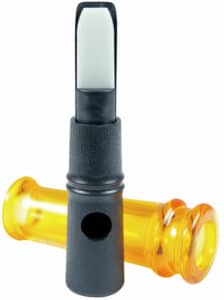
I needed a loud call for my trip to a secluded marsh in northern Arkansas. The marsh there offered ample cover for ducks. So I thought it was a good opportunity to test Primos Hunting Original Wench.
Out of the box, I was impressed by its robust construction using super-hard polycarbonate material. It felt durable enough to handle any accidental drops and harsh conditions. I immediately knew it would withstand even the most demanding situations.
At dawn’s break, I set up scattered decoys near a natural flyway. I used louder come-back/hail calls to cut through the competition from other hunters. The call was loud enough to attract even distant ducks towards my spread.
I found the call easy to blow due to its well-designed reeds and air channels. The tuning hole located in the stopper/bell allowed me to easily adjust the pitch. Another aspect that really impressed me was the call never got stuck in the field.
I’m happy to recommend the Primos Hunting Original Wench for calling over big water or open fields. Its affordability does not compromise sound quality, durability, or ease of use. It is a truly legendary call that justifies its popularity among beginners and seasoned hunters.
4. Camo Max Duck Call
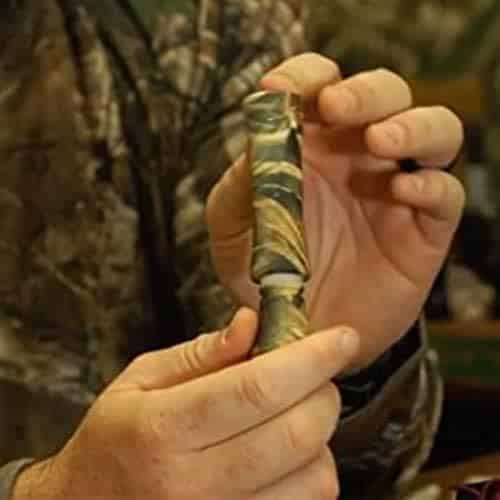
Duck Commander Camo Max has been a top-selling call for almost fifteen years. It is very popular for close-range calling due to its great low-range finishing tone.
Out of the box, the Camo Max comes in a Realtree Max 4 camo pattern. So if you suspect that ducks can spot you, just switch to this call. It doesn’t use any bright colors to help it keep completely hidden in your blind or stand. The high-impact plastic construction makes it tough and durable so you can use it even in harsh conditions.
I have used this call many times for targeting the mallard hen while timber hunting. It lets you manipulate its deep sounds down to almost nothing. The call can be loud if you want. But it works best for producing softer sounds.
Its double-reed design offers a wide range of vocalizations. I’ve used it to produce highly realistic sounds. It is so easy to use that, even new duck hunters can start making calls like the pros. I feel confident suggesting this call to waterfowlers looking for a close-in or finishing call.
5. Duck Commander Triple Threat
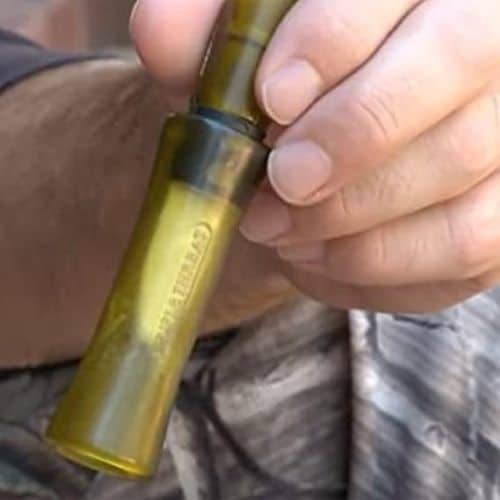
I picked the Triple Threat to test it out during my waterfowling trip last winter to Louisiana. The marsh over there attracts a variety of duck species. But the weather can get really chilly with mist hanging over the trees. So I needed a versatile yet tough call to withstand harsh conditions.
Out of the box, the call felt quite sturdy and rugged in hand. The call came pre-tuned so I found it easy to pick up and use right away. I was able to produce one of the most authentic quacks I ever heard. But you will find it easy enough to produce soft chuckles or loud calls across open water.
I had no issues with reeds sticking or failing during my trip. Its three reeds worked well together to create loud hail and comeback calls. It helped me draw distant mallard hens even before they came into my view. The sound was so realistic, that I could often see ducks turn mid-flight toward our setup. It was really effective in bringing ducks within my shotgun range.
The Triple Threat exceeded my expectations in almost every way. So I can wholeheartedly recommend it to any hunter looking for durability and versatility. But I think beginners will love this one the most as the triple-reed design makes it really easy to blow.
6. Primos Hunting High Roller
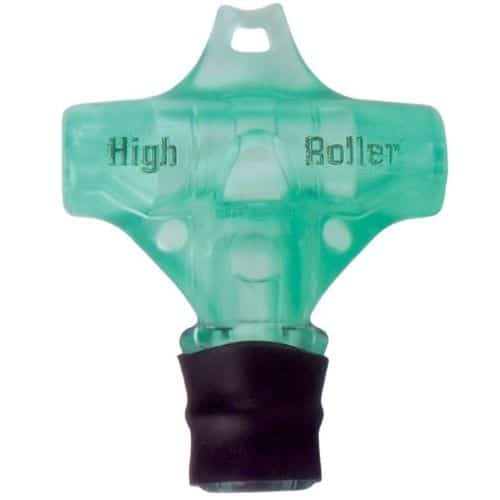
I was using different calls and whistles that took up a lot more space on my lanyard than I wanted. So I was looking for a substitute when I decided to try the High Roller 4-in-1 call. You can use it to sound like a pintail, a teal, a widgeon, or a mallard drake. It works so well, that I wonder why more hunters don’t have it on their lanyards.
It sounds damn great, and yet it is extremely easy to use. You just need to hold it in your mouth and blow. It comes with a built-in roller that makes it flutter by itself. Beginners and new callers will find this extremely useful as you don’t even need to learn how to roll your tongue.
For the pintail whistle, blow a few times while using your finger to cover and uncover the side holes. For the teal whistle, say peep peep into it a couple of times. To make the widgeon sound, you say wee wee into it. For mallard drakes just buzz into it. It is so easy to blow and affordable, I find it one of the best duck whistles on the market.
7. Duck Commander 6-in-1 Call
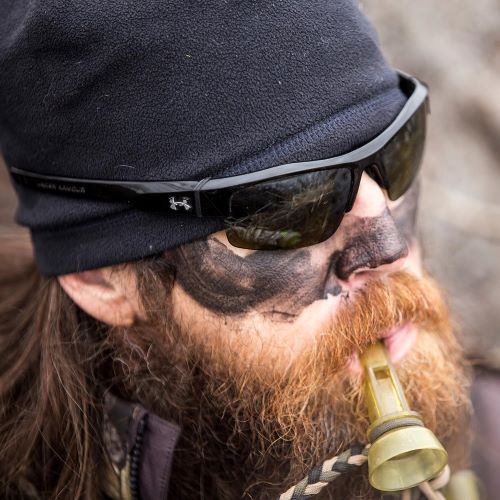
You may not know but this whistle was designed by Phil himself. Many brands copied it and some like Primos Hunting High Roller are even better. But none of them are as cheap or easy to blow. It costs less than half the price of most other options on the market.
Learning the calls is so easy you can make the wigeon one by just doing peep peep peep into the call. You just have to blow into the call without using much back pressure. Even if you are a beginner who lets other people call as you are not that good you will find this one easy to blow. Just follow the plain and simple instructions on the back cardboard.
It is a nice all-around whistle that helped me bring in various fowl species. I found it highly effective early in the seasons when they were a bit less weary. I was able to call in quite a few pintails, wigeons, and teals during my hunt in Northern California. But I was pretty excited when I got it to sound like even a distressed rabbit. So out of all the calls you can put on your lanyard, if you could only choose one, I suggest 100% picking this.
How to Choose the Best Duck Call Under $50
As someone who has used dozens of calls over the years, I can tell you there is no one perfect call for every situation. So you must consider these key factors to choose the right option for your specific needs.
Species
It’s important to choose a call that can replicate the sound of the species you’re targeting. So make sure you choose a model specifically designed for the species you plan to go after.
For example – if you’re hunting mallards, pick a call that can produce the classic hen mallard quack, drake whistle, or feeding chuckle. But a mallard call will not work for wood ducks. You’ll need a call that can mimic the high-pitched squeal of the drake and the whine of the hen.
Material
Most duck calls on the market are made from wood, acrylic, or polycarbonate. Each material has its own unique sound and characteristics.
Acrylic calls are the loudest and most authentic, but expensive. You’ll find them ideal for calling over wide open waters or marshlands.
Wood calls produce soft and low-pitched sounds but freeze in cold weather. They are a good choice for close calling and finishing.
Polycarbonate calls are affordable and durable. Most options on our list are made from polycarbonate as they offer excellent value for money. They may not produce as realistic sounds as high-end acrylic calls, but they will still bring in the ducks.
Sound Quality
A call must sound like a duck to be effective. It must also offer a wide range to make a variety of calls, such as the quack, whistle, and feeding chuckle. So I recommend you buy one that can help you produce the full range of authentic or realistic sounds.
Number of Reeds
Duck calls come with single, double, or triple reeds.
Single reeds can produce loud and more realistic sounds. But you’ll need more practice to master them as they are most difficult to use.
Double reed calls are relatively easier to use. You may not find them as loud as single reeds but they can produce most raspy sounds.
Triple reeds give more control to the caller so you’ll find them easiest to use. But they don’t offer as wide a range of sounds as single or double reeds.
Distance
You’ll need a call with loud volume and projection for calling ducks over open waters. Most single reeds can help you produce loud sounds to attract distant ducks.
But a loud call will not work if you’re timber hunting. You want one with soft and mellow sounds. A wood call is usually more effective for close-range calling.
Ease of Use
A call that is difficult to use can be frustrating. So you must choose a call that is easy to use so you can use it effectively in the field. Look for a call that uses less air pressure so it is relatively easier to blow and control.
Frequently Asked Questions
Are duck calls under $50 any good?
Yes, there is a huge range of good duck calls available for under $50. Premium calls have better materials and craftsmanship. But if you are a beginner or not looking to spend a ton of money, you can still find a quality call under $50. Just because a call doesn’t cost a fortune doesn’t mean it’s low-end or lousy.
How to use duck calls effectively?
You must learn and practice the different duck sounds to use duck calls effectively. I suggest you start by learning the basic quack and build up to feeding chuckles and comeback calls. Once you have some experience, you’ll see what calls and techniques work best for you. Remember to vary your volume and tone to sound more natural. Be patient and never overcall, as it can spook ducks.
How to maintain your duck calls?
I suggest you follow the specific care instructions in the manual that came with your duck call.
Here are the maintenance steps I follow to keep my calls in good condition season after season.
- Step 1: Disassemble and clean all parts with warm water and soap.
- Step 2: Let all the parts dry thoroughly.
- Step 3: Reassemble and store it in a dry, cool place away from direct sunlight.
- Step 4: Regularly check for any signs of wear or damage.
What is the best all around duck call under $50?
Haydel DR85, Buck Gardner Double Nasty, and Primos Hunting Original Wench are some of the top all-around calls on the market. Each of these calls is perfect for beginners or those on a budget.
But Duck Commander 6-in-1 Call is the best all around duck call under $50. You can use it to call teals, pintails, mallards, wigeons, doves, and quails. It is a great tool to have on your lanyard.
Are acrylic duck calls worth the investment?
Acrylic duck calls can be worth the investment if you are a seasoned hunter. They are expensive but produce more realistic sound and are less affected by temperature or humidity.
But an affordable polycarbonate or plastic call can still produce good results for most hunters.
What are duck call lanyards, where to get one, and how to make your own?
Duck call lanyards are straps used for holding multiple calls. They keep your calls organized and within easy reach while hunting. You can get one at sporting goods stores or online or make your own using a parachute cord.
What is the most effective duck call sequence for hunting?
I don’t have a one-size-fits-all answer, as the most effective duck call sequence depends on the situation. You must also pay attention to the behavior of the ducks and choose your calls accordingly.
Conclusion
Jase Robertson Pro is the Best Duck Call Under $50 as per my reviews. It’s also one of my personal favorites. But all the calls I have shortlisted are realistic, durable, and affordable. I’d tested each one of them during real duck hunting trips so you can trust them to bring in the big birds.
Just pick the one that suits your specific hunting conditions. Whether you need a loud call for open waters or a soft call for timber hunting, you can find one on my list that can get the job done. But don’t expect them to win you any calling contests.
I hope you like my pick of the Best Duck Calls Under $50. But I understand that finding the right one for your needs can be a bit daunting – especially for beginners. So feel free to contact me if you need more help.

